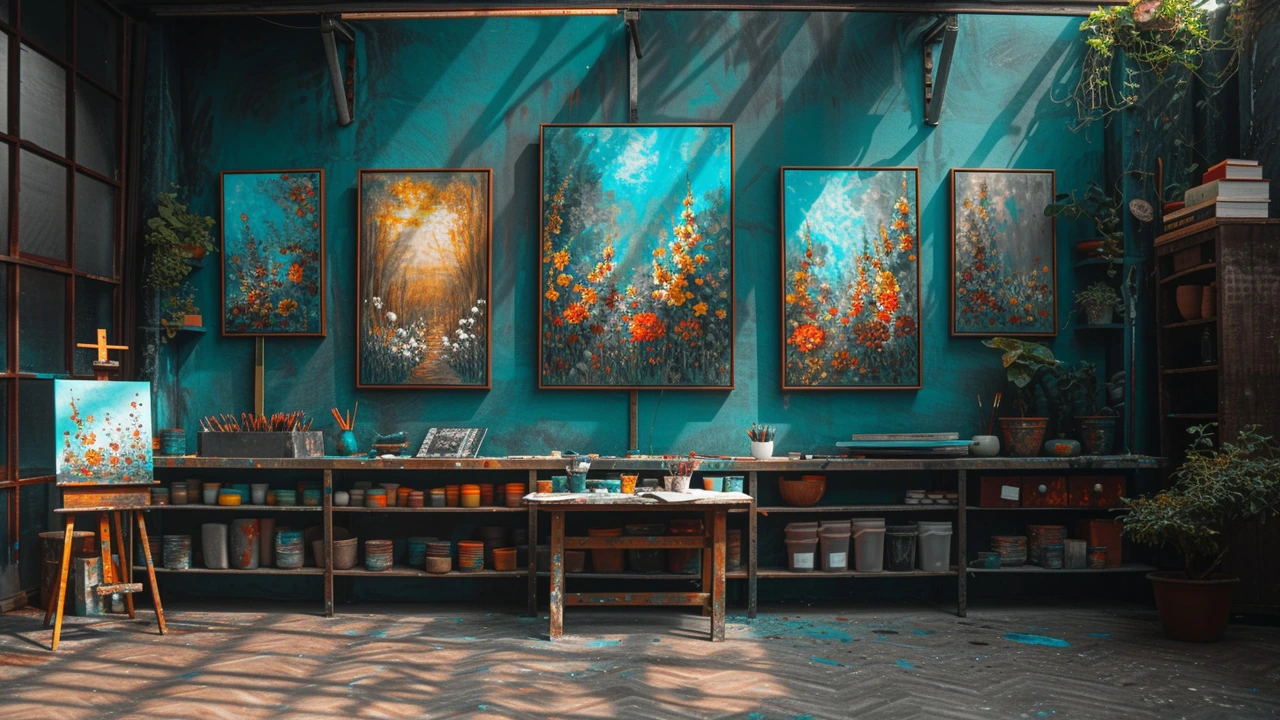The Fascinating Intersection of Science and Creative Arts Therapies
Ever thought about what paints on a canvas or the rhythmic movement of a dance therapy session can offer beyond a moment of expression or therapeutic release? I have, and after a decent chunk of research and a little dalliance with science, I'm thrilled to invite you into the riveting sphere of the science behind creative arts therapies.
The Building Blocks: Understanding Creative Arts Therapies
The first element of our journey dips into the very definition of creative arts therapies. These include music, dance, drama, visual arts, and writing therapies. As someone who once worked his magic with a paintbrush to de-stress (though my high-school art teacher would laugh mirthlessly at the term "magic"), I can vouch for the therapeutic essence they embody.
But there's more than what meets the eye. Creative arts therapies aren't just about creating art for the sake of it. They are guided by certified therapists, professionals trained in both art and psychology, who help individuals express what they might find difficult to verbalize. Creative expression, hence, becomes a conduit to explore feelings, reconcile emotional conflicts, develop self-awareness, manage behavior, reduce anxiety, and increase self-esteem. So next time you reach for that paintbrush or strum that guitar, remember, you're not just creating art, you're navigating your emotional landscape.
A Deeper Dive: The Role of Neuroscience in Creative Arts Therapies
If you're wondering if this is where the science comes in, then you're right. So grab your lab coats (or as a fellow Canadian, your flannel shirts) and delve into the world where art meets neuroscience. The marvel of neuroplasticity takes center stage here. Essentially, it's the brain's ability to reorganize itself, allowing us to adapt to our experiences and environment. And guess what encourages this neuroplasticity? That's right, engaging in creative activities.
Studies show that creating art or music actually releases dopamine, a feel-good chemical that fosters feelings of pleasure and satisfaction; it's the same chemical that gets released when we eat delicious poutine (I mean, who doesn't love that?). But the release of dopamine is not just about feeling good. It also plays a significant role in motivating, learning, and persevering, making the process of creating art a perfect blend of reward and resilience.
The Neural Orchestra: How Different Therapies Stimulate Different Brain Areas
Now, this is where things really get interesting. Each creative arts therapy stimulates different areas of the brain, directly affecting cognition, behavior, and emotional regulation. For instance, music therapy can improve motor skills and emotional expression via the cerebellum and limbic system, critical for physical coordination and emotions, respectively. HIT
Art therapy, like painting and drawing, can stimulate brain areas associated with visual imagery and fine motor skills. Similarly, dance therapy, which I ridiculously attempted at a salsa class once (with more enthusiasm than skill, I assure you), taps into the brain's motor cortex, responsible for the planning, control, and execution of voluntary movements.
Into the Future: The Potential of Creative Arts Therapies in the Medical Field
The benefits of creative arts therapies have been widely recognized in the medical field, and they're being used to complement traditional treatments in a variety of conditions. From children with autism to adults with dementia or veterans dealing with PTSD, creative arts therapies provide an alternative means of expression and communication.
Art, for instance, can help create a window into the world of an individual dealing with Alzheimer's, allowing them to express their emotions in an otherwise confusing world. Dynamic storytelling in drama therapy can help children with autism enhance their social skills and navigate their emotional complexities. And music therapy has shown effectiveness in managing pain, reducing stress, and improving the quality of life for cancer patients. So, the next time you hear a grateful sigh over a melody, see a content smile following a paintstroke, or witness someone lost in the rhythm of a dance, remember, there's a science to it, one as beautiful as the art it's intertwined with.
The possibilities of these therapies are vast and growing, offering a pioneering frontier for medical treatment methodologies. As we continue to explore the potential of creative arts therapies, we give credence not only to the capacity of our brains to heal and adapt, but also to the power of art to shape our experiences and our very selves.
Decoding the Dance: The Intricacies of Dance Therapy
One particular personal encounter comes to mind when talking about the depths of creative art therapies' power. So, remember my little salsa endeavor I mentioned earlier? That was, interestingly enough, rooted in my attempt at dance therapy. It was less about the dance steps (though I did eventually manage to not step on people's feet), and more about the emotional journey those movements guided me through.
Each rhythmic sway, each synchronized footstep, painted the canvas of my emotional health. Anxieties that I didn't even know existed slithered away with each intense spin. It was a mental and emotional release that was tangible, leaving me lighter, happier, and with a newfound appreciation for dance as a powerful tool for healing. So trust me when I say, creative arts therapies pack more power than you may think. It goes beyond surface-level artistry or motion – it's an inward journey, a personal revolution, a dance with your own emotions and the beauty of resolving them creatively.

